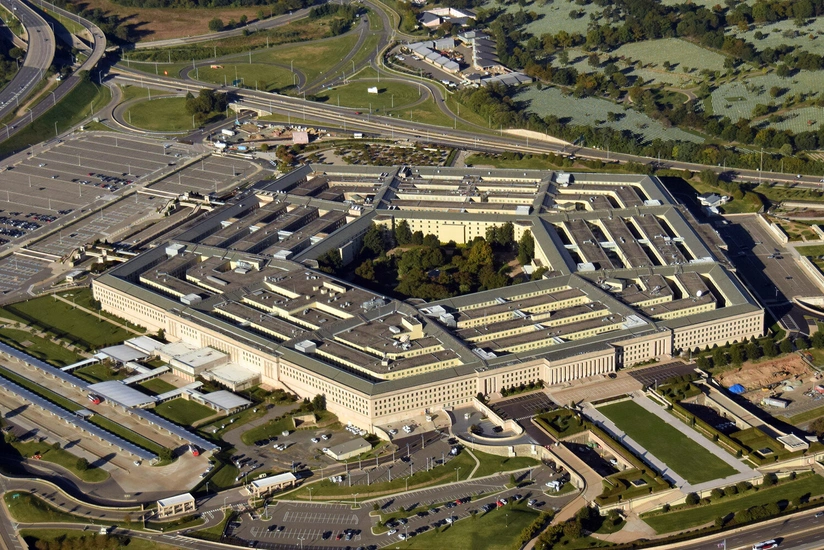Japan, US agree to urgently boost deterrence amid assertive China
- 30 March, 2025
- 15:17

Japanese Defense Minister Gen Nakatani and his US counterpart, Pete Hegseth, agreed Sunday to accelerate efforts to strengthen the alliance's deterrence amid China's growing assertiveness in the region while affirming progress in upgrading command frameworks for smoother coordination between the two countries' forces, Report informs via Kyodo News.
The agreement, reached during Hegseth's first visit to Japan as Pentagon chief, underscored the strength of bilateral ties even under US President Donald Trump's administration, which has raised concerns about straining the longstanding alliance with demands for increased defense spending.
Citing the increasingly severe and complex security environment, Nakatani told a joint press conference with Hegseth after their meeting in Tokyo that the two "confirmed a resolution to move forward with a sense of urgency" on initiatives to reinforce the alliance capabilities to deter and respond.
Hegseth said the United States stands together with Japan "in the face of aggressive and coercive actions by the Communist Chinese" and emphasized that his nation is committed to sustaining "robust, ready and credible deterrence in the Indo-Pacific, including across the Taiwan Strait."
The two defense chiefs agreed that they oppose "any unilateral attempts to change the status quo by force or coercion" by Beijing, including in the East and South China seas, according to the Japanese Defense Ministry.
China has been stepping up its assertiveness over the Japanese-controlled Senkaku Islands in the East China Sea, with Coast Guard ships repeatedly entering nearby waters. China also claims sovereignty over almost the entire South China Sea, home to one of the world's busiest maritime sea lanes.
On Taiwan, which Beijing views as a renegade province awaiting reunification, by force if necessary, Nakatani and Hegseth agreed that the two countries should "pay attention to Chinese military moves" over the island and highlighted the importance of the "peace and stability" across the Taiwan Strait.
While noting that "everybody needs to do more" in terms of investing in defense, Hegseth said he did not talk "specific numbers" about Japanese defense spending with Nakatani.
"We are confident that Japan will make the correct determination" of what capabilities are needed, he said.
The Japanese government decided in 2022 to increase related defense outlays to 2 percent of its gross domestic product by fiscal 2027 in a significant shift in its postwar security policy under its war-renouncing Constitution. Japan has long kept its defense spending to around 1 percent of GDP.
Trump, who took office in January, has repeatedly said that US allies can and should do more in terms of defense spending, but he did not make any such complaints publicly when Japanese Prime Minister Shigeru Ishiba visited Washington in February.
Shrugging off concerns that a plan to enhance the US military in Japan may be affected by cost-cutting efforts, Hegseth said at the press conference that the Defense Department has started "phase one" of upgrading US Forces Japan to a joint force headquarters.
"This upgrade will improve our ability to coordinate operations with Japan's own Joint Operations Command, or JJOC," the defense secretary said, referring to the Japanese Self-Defense Forces' newly launched command that takes centralized control of its ground, maritime and air services from peacetime to contingencies.
USFJ will be reorganized to a "warfighting headquarters" with increased staff and authorities needed to accomplish new missions, Hegseth said.
Some US media have recently reported that the United States could stop a planned expansion of USFJ as part of efforts to slash Defense Department spending.
Reconstituting USFJ with greater operational responsibilities was agreed to during the tenure of Trump's predecessor, Joe Biden, with the US side at the time calling it "the most significant change to US Forces Japan since its creation."
According to a Japanese Defense Ministry official, the US military has established a team at Yokota Air Base in western Tokyo to coordinate with the new Japanese command, marking the first step in the USFJ upgrade.
In the face of China's rapid military buildup and North Korea's ongoing nuclear and missile development, Nakatani and Hegseth agreed on an early start of coproduction of medium-range air-to-air missiles, known as AMRAAM, and affirmed enhancing joint presence in remote southwestern Japanese islands is one of their top priorities.
Nakatani said he conveyed to Hegseth Japan's interest in exploring the possibility of jointly producing the Standard Missile-6 designed to intercept hypersonic weapons.
The two also agreed to expand security cooperation in outer space and cyberspace.
Later in the day, Hegseth met with Ishiba, and they shared a goal of realizing a "free and open Indo-Pacific" through bilateral cooperation, according to the Japanese government, referring to the vision widely viewed as a veiled counter to China.
Hegseth's first official trip to the Indo-Pacific region began Monday and has included stopovers in Hawaii, Guam and the Philippines, another key US ally in Asia.
On Saturday, Hegseth visited the remote Pacific island of Iwoto, also known as Iwojima, and joined Ishiba and Nakatani at a ceremony marking the 80th anniversary of a monthlong, fierce World War II battle fought there between Japanese and US forces.
